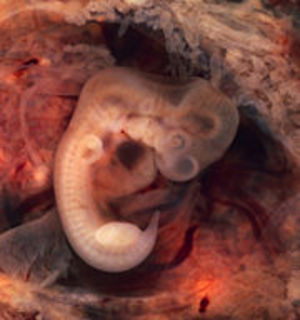There are several types of abortion procedures, each one with its own time and place. Which procedure is used is usually determined by how much time has elapsed into the pregnancy. Other factors, such as the woman’s individual health needs, may sometimes play a role. Before deciding upon a procedure, doctor and patient need to be sure how far along the pregnancy is and of other issues such as if the pregnancy is ectopic. There are some methods of abortion that are non-surgical that can be used in the first trimester, but most abortion procedures are surgical. The risks vary with each method.
There are two forms of non-surgical abortion, both used in the first trimester. Methotrexate & Misoprostol (MTX) may be used until the seven weeks gestation. Mifepristone & Misoprostol may be used until nine weeks gestation. In both cases, the medication stops fetal development and induces a miscarriage within a few hours. The contents of the uterus separate from the uterine wall, and the cervix dilates enough to release them. First, the methotrexate or mifepristone is given, followed by the misoprostol between 1 and 3 days later. This works most of the time, but it may fail causing severe birth defects. When it does fail, surgical abortion becomes necessary. Bleeding usually lasts 8-9 days. The mother may also experience nausea, cramping, and diarrhea.
Surgical abortions are usually performed in a clinic, but sometimes a hospital is necessary because of the higher risks associated with certain procedures at advanced gestation. These procedures take less than an hour, usually only 15 or 30 minutes, but the woman is usually kept for up to 5 hours to recover. The risks to the mother are bleeding and blood loss, cervical and uterine damage, and infection. Side effects include cramping, nausea, and faintness.
Suction Aspiration, aka suction curettage or vacuum aspiration, is used between 6 and 12 weeks gestation. Before this procedure, the woman is often give pain medication and misoprostol. The procedure begins like a routine pap smear would. The woman lays down on her back, placing her feet in stirrups while her vagina is opened with a speculum. The doctor applies a local anesthetic to the woman’s cervix. A tenaculum holds it open while it is dilated by cone shaped rods. A long plastic tube is then inserted into the uterus, and the contents are suctioned out.
Dilation & Curettage (D&C;) is performed between 12 & 15 weeks gestation. This procedure is also done after a woman miscarries to make sure that her uterus is empty, to help speed her recovery. It is much like suction aspiration, with the exception that a curette (a long, loop-shaped knife) is used to scrape the contents of the uterus away from the uterine wall before suctioning. D&C; comes with a higher chance of uterine perforation.
Dilation & Evacuation (D&E;) is done between 15 and 21 weeks. About 24 hours before the procedure, a laminaria or synthetic dilator is inserted into the cervix. During the procedure, a tenaculum is used to keep things in place while cone-shaped rods further dilate the cervix. This is followed by suctioning with the cannula, scraping with the curette, and sometimes removal of larger parts with the forceps. After a final suctioning, the procedure ends, having only lasted about 30 minutes. Side effects last longer, up to two weeks, and the risks are increased.
Induction Abortion is rare, used mainly when there is a medical problem. In this procedure, the amniotic sac is injected with a solution such as salt water, urea, or potassium chloride. This burns the child, much as salt does a slug. Prostaglandins are inserted into the vagina to soften or ripen the cervix. A laminaria is inserted to start dilation. Pitocin, a synthetic form of oxytocin, is given through an IV. This causes the mother to have contractions, which force the burned, deceased child down the birth canal. This is done during the second and third trimester. The risks include accidental injection of saline and other medicine into the mother’s bloodstream and excessive bleeding. Side effects are about the same as with other procedures.
Dilation & Extraction (D&X;) is the most hated form of abortion, not just because of when it is used but because of how close the baby comes to being born before dying. This is done after 21 weeks, which is a problem for many as babies have survived outside of the womb as early as 23 weeks with NICU treatment. Also known as partial-birth abortion, in this surgical procedure the fetus’ feet and body are delivered by forceps guided by ultrasound, but the head is left inside the vagina. The child’s brain is suctioned out through a tube in the back of the skull, which deflates the head. The child comes so close to being born but is killed before birth is complete.
Any one of these procedures can fail, especially if performed too late in the pregnancy. When this happens, severe birth effects can result as well as fetal injury. There are also risks to the mother. The decision to abort is one not to be taken lightly. Whether you are pro-choice or pro-life, it is important to know about the different abortion procedures to avoid confusion and misunderstanding. Whether or not the fetus experiences pain is subject to debate but is of tremendous importance to many who have concerns about abortion. Abortion is sometimes necessary for medical reasons, but most abortions are performed for the convenience of the mother. Regardless, a life is lost, and sometimes it is a life that would have been viable outside of the womb. How do you feel about this?



